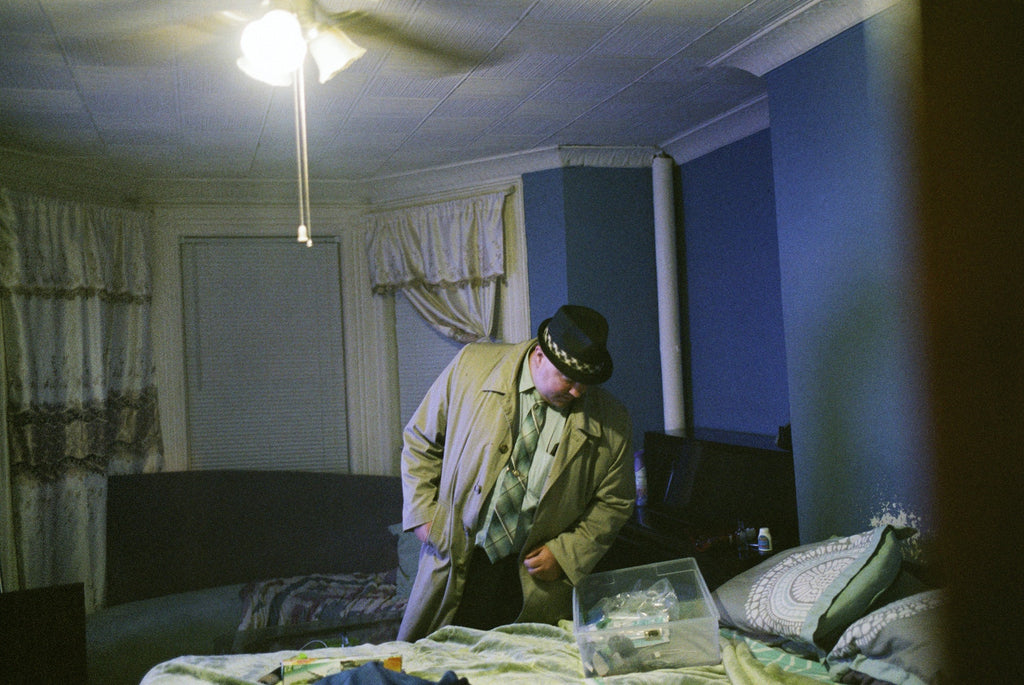Photobooks of 2022: Miwa Susuda

Homicide by Theo Wenner, Rizzoli
When I asked Wenner about his motivation for this project, he said simply: crime is crucial in understanding American history. The project itself was an ambitious undertaking that saw Wenner devote three and a half years to pounding the pavement with detectives on the homicide beat of Brooklyn’s 90th Precinct. I admire Wenner’s dogged determination and belief in bringing his vision to fruition, deftly navigating his theme at a time when police violence has been a heated flashpoint in society at large. His vibrant portraits offer a little seen window into the lives of detectives, both on and off the job, as thrilling as any scene from The Godfather or The Sopranos. Yet Wenner’s world is real and informed by a unique documentary voice of his own. I think Homicide is an important contribution to the police pantheon that ranks up there with Jill Freedman’s Street Cops and Weegee’s Naked City.
Périphérique by Mohamed Bourouissa, Loose Joints
This first full compilation of Borouissa’s earlier Périphérique series (2005-2008) sheds new light on the media’s deceptive reception of the coterie he depicted on the Parisian outskirts, as well as the original series’ lasting influence in the present day. This book resonated with me on a visceral, personal level. As a Japanese expat who has spent over 20 years in New York City, I can commiserate with the all-too-human tendency to brush people into facile categories such as ethnicity, gender, or occupation. I have a lot of respect for Bourouissa. His masterful staged photos widen the possibility of documentary photography. He is also a sensitive thinker, who grapples with pivotal social issues in a way that compels us to rethink what is wrong with our world right now. Périphérique is a masterpiece that belongs on the top shelf of any contemporary photobook collection.
River’s Dream by Curran Hatleberg, TBW
For me, Hatleberg is akin to a photographic messiah, offering us salvation from an increasingly image-saturated society. The deluge of images online in our social media streams dilutes reality and dulls our imaginations. I think photography is most compelling in material form (= the printed book), and in this sense, I think Hatleberg’s images harken back to the original rawness and immediacy of photography at its best, giving order to disparate meaning. In contrast to photographers who make books out of fleeting encounters and casual impulse, Hatleberg spent more than a decade building up a solid relationship with a family in a small community in northern Florida to produce River’s Dream. This lengthy incubation period was well worth it, as it is a beautiful book. Hatleberg’s images evince a sincerity of intention and attention, as well as respect for the people who were willing to be a part of his project. Striking an equal relationship between practitioner, subject, and receiver, Hatleberg presents a commendable new horizon for contemporary photography.
The Well By Night Shafran, Loose Joints
Best known for his precise and sharp images exploring how contemporary consumer culture affects our visual landscape, Nigel Shafran has been rightfully called one of the most important figures in contemporary photography. This collaboration with designer Linda van Deursen is a testament to the value a harmonious and trustful relationship plays in making beautiful books.
Silver + Chrome by Mitch Epstein, Steidl
Silver + Chrome reaffirms Epstein’s standing as a great student of Garry Winogrand and an important member of the American New Color movement alongside Eggleston, Shore, Meyerowitz, Sternfeld, and Misrach. Somehow more raw than later works such as American Power, Rocks and Clouds and State of the Union. Presumably, Silver + Chrome seems to be a reflection of the unbridled excitement Epstein felt for subjects encountered on the streets of New York, Los Angeles, and New Orleans in the halcyon years from 1973 to 1976. I derived an exciting secondhand energy and was struck by the emotion pulsing through the pages of this publication. I am also impressed by Steidl’s longstanding relationship with Epstein, which helps us understand his evolution as an artist, over half a century.
SCUMB Manifesto by Justine Kurland, Mack
Coming from a Japanese background, I think feminism will necessarily vary from culture to culture. People in Tokyo have a different idea of activism from people in New York, and I admit that Americans can be a bit too “in your face” for my tastes. That said, I loved Kurland’s SCUMB Manifesto, and think it’s one of the best books of 2022. I liked how Kurland’s work does not browbeat male photographers specifically, but rather, takes a critical stance against the broader patriarchal social system. Above all, Kurland’s work isn’t negative. On the contrary, it strikes me as delightfully joyful. I hope her playful images gain a wider audience, deserving of her positive and objective viewpoint as an artist.
Miwa Susuda has been at the center of the photobook industry for over 16 years as a photobook consultant at Dashwood Books in NYC, a publisher of Session Press, writer for IMA magazine, Tokyo and lecturer at Penumbra Foundation, NYC. Susuda has appeared at galleries, art fairs, and museums worldwide, including Vertical Assembly with Lesley A. Martin, CONTACT Photo, Toronto, the Tokyo Art Book Fair,The Museum of Contemporary Art, Tokyo, the Museum of Fine Arts in Boston, and the Visual Studies Workshop in Rochester, NY, etc. Susuda’s Session Press imprints have received numerous prestigious prizes and nominations. Her publication of Red Flower, by Mao Ishikawa as 2017 best book of the year by Liberation. In addition, Taratine by Daisuke Yokota and Bible and Dildo by Momo Okabe have all won the Paul Huf Award at Foam Museum in the Netherlands.
Images:
Homicide by Theo Wenner, Rizzoli
SCUMB Manifesto by Justine Kurland, Mack

